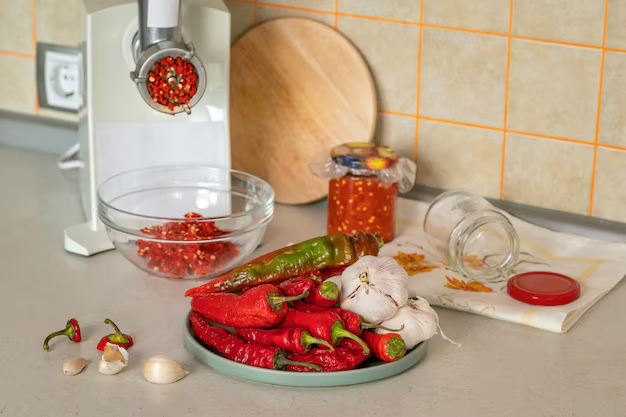Discover the Shelf Life of Chili in Your Refrigerator 🌶️
Have you ever wondered how long that delicious pot of chili in your fridge will stay fresh and flavorful? Whether you whipped up a batch for a weekend gathering or simply enjoy having chili on standby for a quick meal, understanding its shelf life is key to enjoying it safely. In this article, we'll explore how long chili can last in the refrigerator and dive into best practices for storing it, signs that it might have gone bad, and related topics to help you make the most of your culinary masterpiece.
Understanding the Shelf Life of Chili
When it comes to storing chili, the main goal is to retain its taste and quality while ensuring it remains safe to consume. Chili, like many cooked dishes, has a limited lifespan in the refrigerator. Generally, you can expect your homemade chili to last about three to four days in the fridge when stored properly. This time frame ensures that the flavors remain robust and the dish is safe to eat.
However, several factors can influence this duration:
- Ingredients Used: The type of meat (beef, chicken, turkey) and other ingredients (beans, tomatoes, spices) can affect the chili's longevity.
- Cooking Method: Properly cooking chili to a safe temperature initially slows bacterial growth.
- Storage Conditions: How the chili is stored in the refrigerator also impacts its shelf life.
Best Practices for Storing Chili
🍲 Proper Containers Matter
To maximize the freshness and longevity of your chili, use airtight containers. Glass or BPA-free plastic containers with secure lids are ideal. Avoid using metal containers as they can impart undesired flavors to your chili.
🌡️ Temperature is Key
Ensure your refrigerator is set to a temperature of 40°F (4°C) or lower. Keeping your fridge at this temperature helps slow down bacterial growth, effectively extending the life of your chili.
⏱️ Timely Storage
It's best to refrigerate the chili within two hours of cooking to prevent bacteria from multiplying. If you plan to store a large batch, divide it into smaller portions for quicker cooling and easier access.
🔄 Rotation Strategy
When you frequently cook and store dishes like chili, it's beneficial to follow a first-in, first-out system. This ensures you consume the oldest food first, minimizing waste.
How to Identify if Your Chili Has Gone Bad
Even when stored correctly, chili can go bad if kept for too long. Here's how to spot potential spoilage:
👃 Unpleasant Odor
A sour or off smell indicates spoilage. Trust your nose; if the aroma seems off, it's best not to taste or consume it.
👀 Change in Appearance
Be cautious if you notice a change in texture, unusual color, or mold growth on the chili's surface. These are clear signs it has spoiled.
🤢 Off Taste
If you decide to taste a small amount, any sour or otherwise unpleasant flavors should suggest that the chili is no longer safe to eat.
Can You Freeze Chili?
Freezing is an excellent way to extend chili's shelf life and maintain its flavor. When done correctly, frozen chili can last for up to three to six months, offering a convenient meal option down the line.
❄️ Freezing Tips
- Allow the chili to cool before transferring it into freezer-safe containers or heavy-duty freezer bags.
- Leave some space at the top of the containers or bags for expansion during freezing.
- Label the containers with the date to ensure proper usage.
Reheating Chili: Tips for Best Flavor
When you're ready to enjoy your stored chili, reheating it properly ensures it's both safe and delicious.
🔥 Stovetop Method
Reheat the chili slowly over medium heat, stirring occasionally. This helps evenly distribute heat and prevents scorching.
🎛️ Microwave Method
Use a microwave-safe dish, cover it loosely, and reheat in intervals, stirring between each, to ensure uniform warming.
🚫 Avoid Frequent Reheatings
Try to only reheat the portion you plan to eat and avoid reheating the entire batch multiple times, which may degrade quality and safety.
Related Topics: Exploring Variations and Alternatives
🥄 Vegetarian and Vegan Chili
For those looking to diversify their meals or cater to dietary preferences, vegetarian and vegan chili options are fantastic alternatives. Using lentils, quinoa, or an assortment of beans can provide satisfying textures and flavors.
🍽️ Chili as a Versatile Meal Component
Chili isn't just a standalone dish. It can serve as a topping for baked potatoes, a filling for tacos, or a flavorful addition to casseroles. Exploring these variations can make meal planning more exciting.
🔍 Food Waste and Storage Solutions
Minimizing waste is part of effective food storage. Learning to store other perishable foods correctly and understanding their shelf life helps in this endeavor, ultimately leading to a more efficient kitchen.
Quick Reference: Chili Storage Tips 📝
- Refrigerate within two hours of cooking.
- Store in airtight containers.
- Consume within 3-4 days when refrigerated.
- Freeze for long-term storage up to 3-6 months.
- Ensure your refrigerator is set to 40°F (4°C) or lower.
- Recognize signs of spoilage: strange odor, mold, or off color.
Final Takeaways
Understanding how to store your chili properly can enhance both its flavor and safety, allowing you to enjoy this hearty dish at its best. By following the guidelines above, you can ensure that your meals are delicious, safe, and free from waste. Whether you’re a chili connoisseur or a casual cook, these insights will help you manage your food effectively, adding value to your kitchen endeavors.
Always keep in mind that when in doubt, it's safer to discard questionable food than to risk consuming spoiled leftovers. Happy cooking! 🌟
